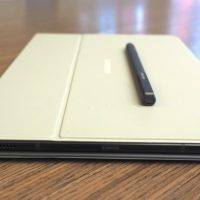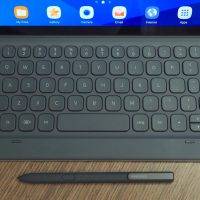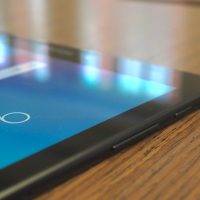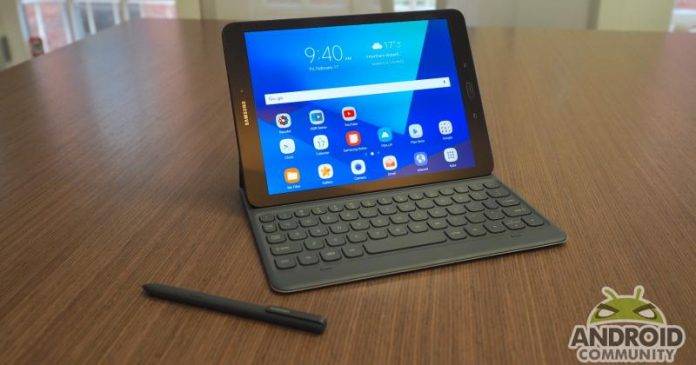
Some pundits would say that Android tablets have long plateaued. Unlike their smartphone cousins that have a couple of flagship contenders year after year, it seems that Android tablets are limited to one or two notable ones annually. In 2015, Google unveiled the Pixel C, currently the most high-end “Nexus” tablet. Last year, Lenovo treated us to the futuristic and eccentric Yoga Book. While it might still be too early to say, the Samsung Galaxy Tab S3 could very well be the 2017 star, at least for this half of the year. And it rises to that top spot by combining the greatest, though not always latest, technologies with tried and tested features.
Classic design. Almost.
The Galaxy Tab S3 is definitely gorgeous. Gone is the mostly plastic, and somewhat cheap, appearance seen in the first two Galaxy Tab S models. Samsung has aimed to consolidate its design language across device tiers. Being its flagship tablet model, the Galaxy Tab S3 now borrows the same glass and metal design as seen on the Galaxy S7. It gives the tablet a much more premium look from all sides while still retaining the thin profile of its forebears, at only 6 mm thick. That said, glass doesn’t always come off as the most reassuring material, with an air of fragility, no matter its actual durability. Many might opt to protect their would be tablets with cases, which, of course, nullify whatever benefits this redesign brings.
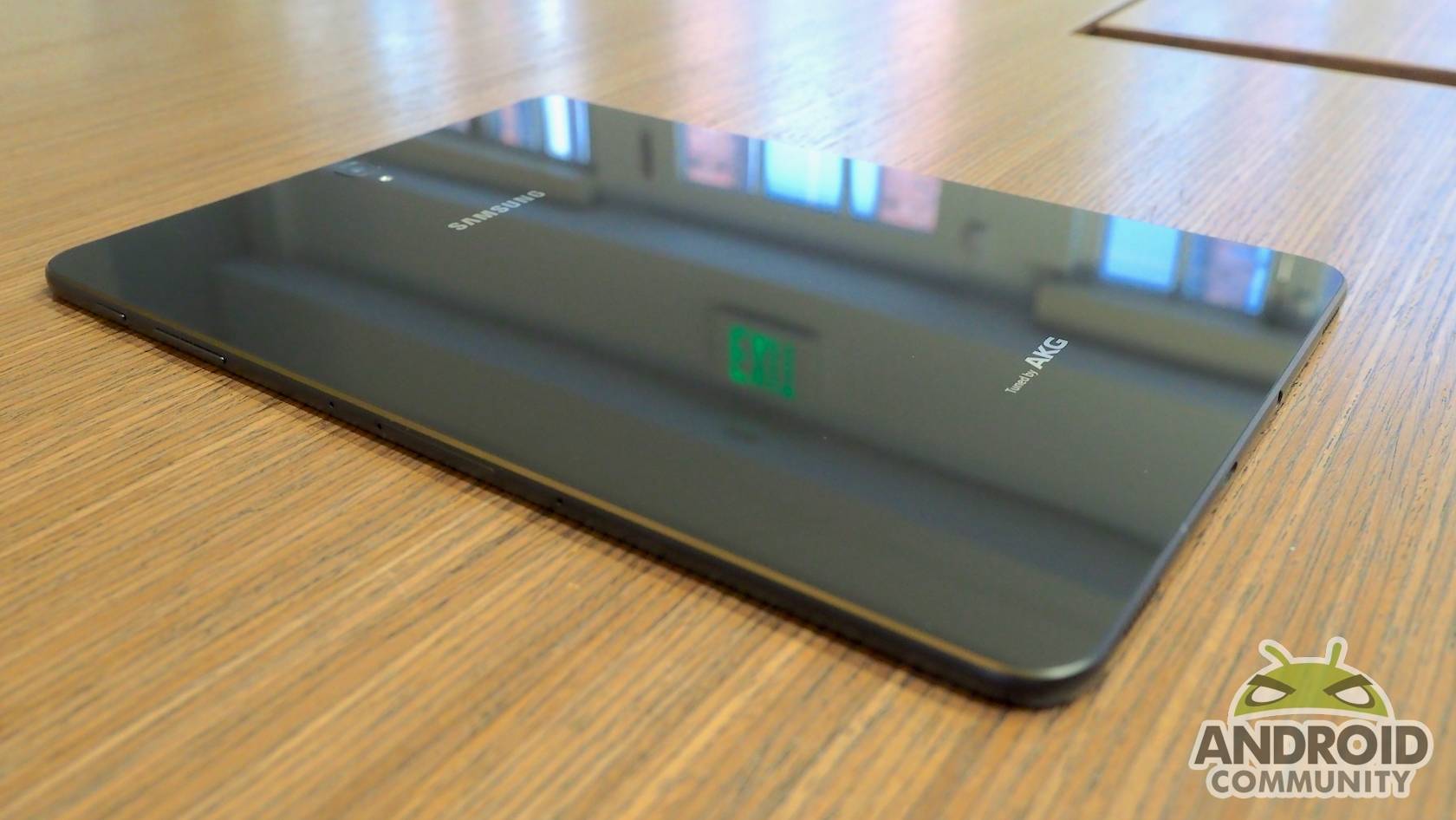
While unique in bringing glass to a world of mostly plastic or metal tablets, the Galaxy Tab S3 still has the hallmarks of a typical Samsung device. The home button is still at its familiar spot on the front and the edges are more chamfered than curved. One could almost say that the Galaxy Tab S3 is really an enlarged Galaxy S7, though there are, of course, some details that clearly shout “tablet”.
For example, there are four speakers. And yes, those would bring to mind some other tablet design. There are even POGO pins for connecting, you guessed it, a keyboard cover. The similarities with other tablets, however, end there. Or rather, end at the bottom edge of Galaxy Tab S3. There you will see both the USB-C port and the 3.5 mm jack. Yes, both holes are there on the same side. What makes their location even stranger is that the USB-C port is off center, a bit to the right of the home button (display facing up) while the headphone jack sits on the other side. It’s as if Samsung tried to aim for symmetry but failed to account for the different sizes and shapes of the two holes. An OCD’s worst nightmare.
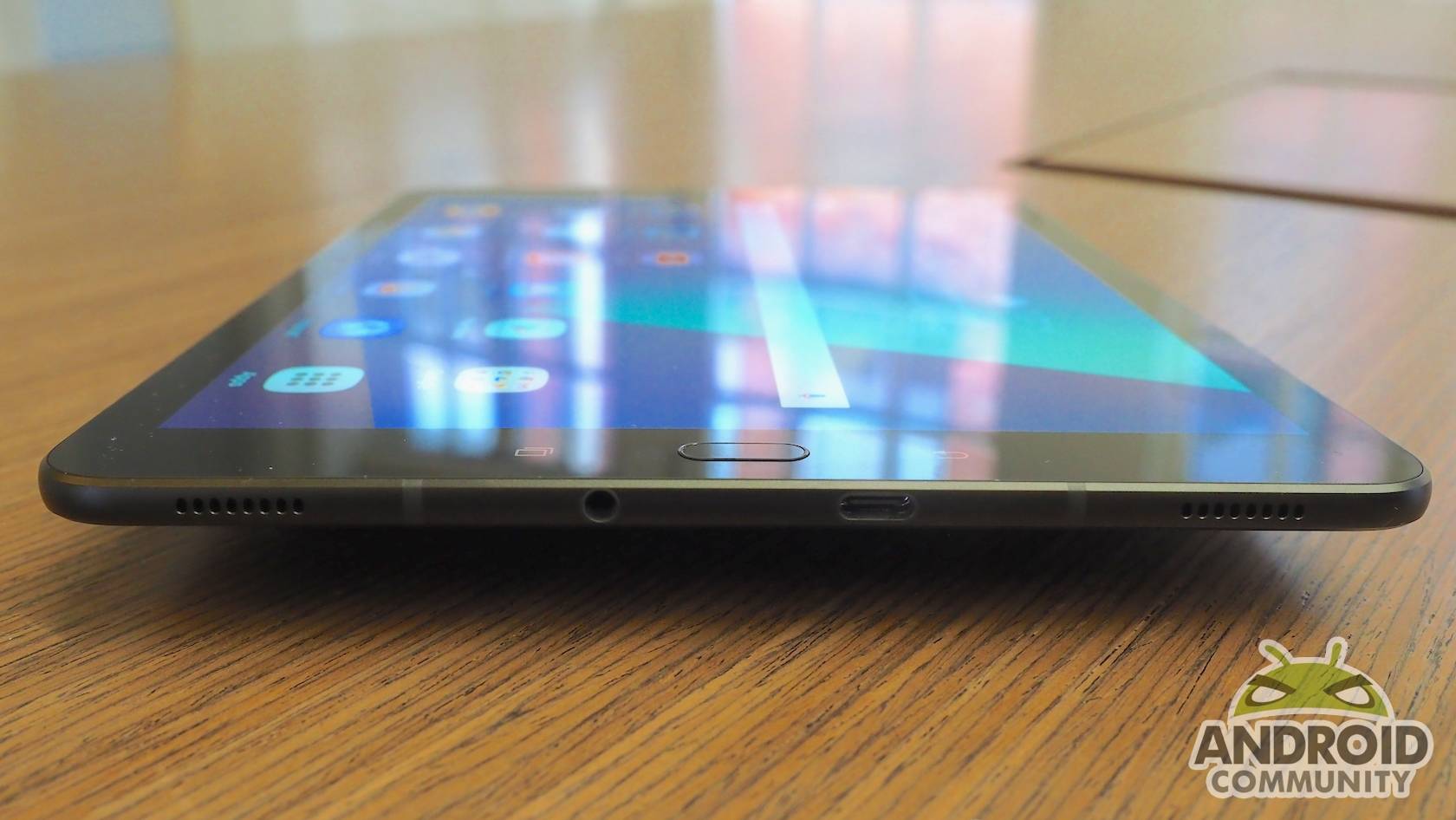
Although optional accessories, the covers are still worth noting, especially the keyboard cover. The plain Book Covers will come in colors of black, white, and green, that last one a strange choice for Samsung, while the Keyboard Cover will only come in professional black. While the way the keyboard cover folds to prop up the Galaxy Tab S3 will again remind some of Samsung’s bitter rival, the difference between the two become clear as night and day. Whereas Apple opted for a cloth-like material for its Smart Keyboard, Samsung has gone with hard plastic. It makes the keyboard a bit thicker but has one distinct advantage not found in the Smart Keyboard: backlighting.
Hard facts of hardware
There isn’t really a lack of Android tablets in the market. There is, however, a distinct lack of notable, high-end Android tablets. Most manufacturers, even the big ones like Lenovo and LG, have been putting out tablets on lower end of the device spectrum. Samsung, who can perhaps be credited for actually pushing Android tablets, has been guilty of the same for quite a while now. Even the previous Galaxy Tab S2 didn’t exactly bear the highest specs available at the time of its launch.
The Galaxy Tab S3, in contrast, is finally worthy of the premium “S” brand. With the Qualcomm Snapdragon 835 still coming, the Snapdragon 820 is as latest as you can get, save for the slight 821 bump. There is 4 GB of RAM inside, which is pretty much standard for high-end mobile devices of this generation. There is also 32 GB of storage, which is a bit of a disappointment. That said, it is, of course, expandable with a microSD card slot, up to 256 GB if you want. The one thing that didn’t see an upgrade is the screen, which is the same 9.7-inch 2048×1536 as its predecessor. That happens to be the same size and resolution as the 9.7 iPad Pro, so no surprise there really.
Taking photos or recording videos with a tablet is still an absurd idea, but that hasn’t stopped Samsung from putting in decent sensors on the Galaxy Tab S3. On the back you have a 13 megapixel camera while on the front you get 5 megapixels.

To put it simply, the Galaxy Tab S3 was made to handle everything you try to throw at it. Considering this is a Samsung device with Samsung’s notorious TouchWiz user experience, that’s definitely a must. But the Galaxy Tab S3 has one other feature that really sets it apart from most Android tablets in the market. Coincidentally, it’s the feature that also directly pits it against the iPad Pro as well.
The S Pen is still mightier
Long before Apple decided that styluses were cool after all, Samsung was already making tablets with pens. Once upon a time, Samsung tablets mirrored the development of its smartphones, with an S Pen enabled Galaxy Note model every so often. That, however, hasn’t happened since 2014 and the S Pen could only be found in specific mid-range Galaxy Tab A models.
With the Galaxy Tab S3, the S Pen returns to premium tablets, with a catch. Unlike previous tablets, the S Pen has no home inside the tablet, no silo to make sure it never gets lost. That does seem to be the case these days with styluses for tablets, from the Microsoft Surface Pro to the Apple iPad Pro to the Lenovo Yoga Book. To keep the S Pen from straying too far, Samsung does put a clip on it so you could attach it to your shirt, pocket, or bag.

Snarkasm aside, there are benefits to no longer being limited to keeping the stylus a teeny-weeny size. For one, the thickness of the tablet itself no longer has to take into account the size of the stylus and the stylus no longer has to keep the thickness of the device in mind. Anyone who has had hand cramps from holding the ultra thin S Pens of the Galaxy Note phones will know what this means. The S Pen finally comes in a more ergonomic size, though the square-ish barrel of the stylus might feel a bit awkward. Samsung says this is to keep the pen from rolling off, which is strange considering it has a clip anyway.
Of course, the real upgrade here is inside the S Pen. Or rather, both inside the S Pen and under the screen. As before, Samsung has utilized Wacom’s prized technology to make wondrous things happen and, just as Wacom’s technology has evolved, so has the S Pen. 4,096 levels of pressure. Yes, read that. 4,096. It’s an insane number even for digital artists but that is exactly what Samsung is pushing with the new S Pen. That still won’t match Wacom’s new Pro Pen 2 tech with 8,192 levels of pressure, but, on a tablet this size and a stylus that small, you might not really be able to tell. Some would argue that even 2,048 levels is more than too much.
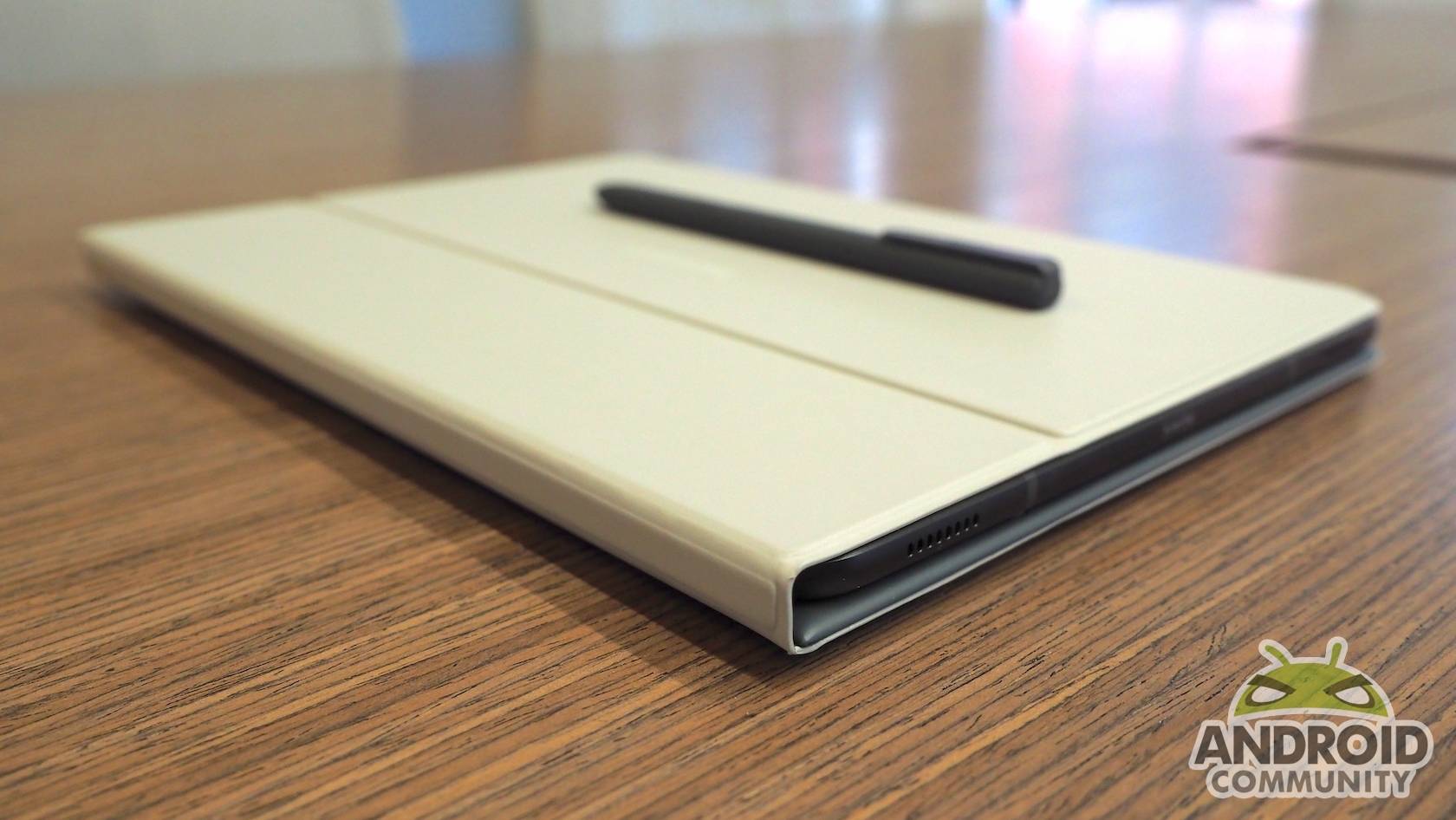
That’s not the only new thing either. For the first time, the S Pen is getting tilt support, a feature that digital graphics artists will probably drool over. In a nutshell, this means that the Galaxy Tab S3 will recognize the S Pen even when it’s an angle and produce an output that matches that tilt. Sort of like when you’re drawing with a pencil tilted to the side versus drawing with tip straight down. This should give creatives a bit more leeway when the use the S Pen for creating magic.
Those trying out this new S Pen might notice a subtle but also substantial change. The tip of the stylus is now made of rubber instead of the usual plastic common with such active styluses. This delivers an experience closer to writing on paper rather than sliding a plastic tip over very smooth glass, something even the iPad Pro is notorious for.
Entertainment-first
With the new and improved S Pen, plus the keyboard cover, you might think that the Galaxy Tab S3 is being positioned for serious business and content creation. While that has a ring of truth, you’d only be partially correct. Strangely enough, Samsung is trying to sell the Galaxy Tab S3 as a tablet built for immersive entertainment, and for good measure.
Remember those four speakers mentioned above? They have a neat trick that tries to deliver 3D spatial audio right in your hands, or on your desk. The two speakers farthest from you play audio that should also be farthest from you. Naturally, the two speakers nearer to the user will project sounds that should sound closer. Pretty much like the experience you’d get at a cinema, but right at home or wherever you are. Those 0.64-watt speakers, by the way, are tuned by AKG for more street cred.
Samsung is also trying to sell the Galaxy Tab S3’s video chops, and not just because it has that still vibrant Super AMOLED panel. This time, Samsung is shining the spotlight on the way those images are processed and rendered on that display. In particular, it is boasting of its mDNIe, short for mobile Digital Natural Image engine, that automatically adjusts settings such as sharpness, contrast, and brightness to compensate for similar changes in the viewed content. If you guessed this would be going towards HDR, you’re absolutely correct. mDNIe is also responsible for HDR processing, assisted by the Galaxy Tab S3’s native support for the HEVC H.265 codec. What this means, in a nutshell, is that the Galaxy Tab S3 is primed to support HDR video, especially HDR video streaming, and Samsung promises to partner with leading content providers to make full use of that capability.
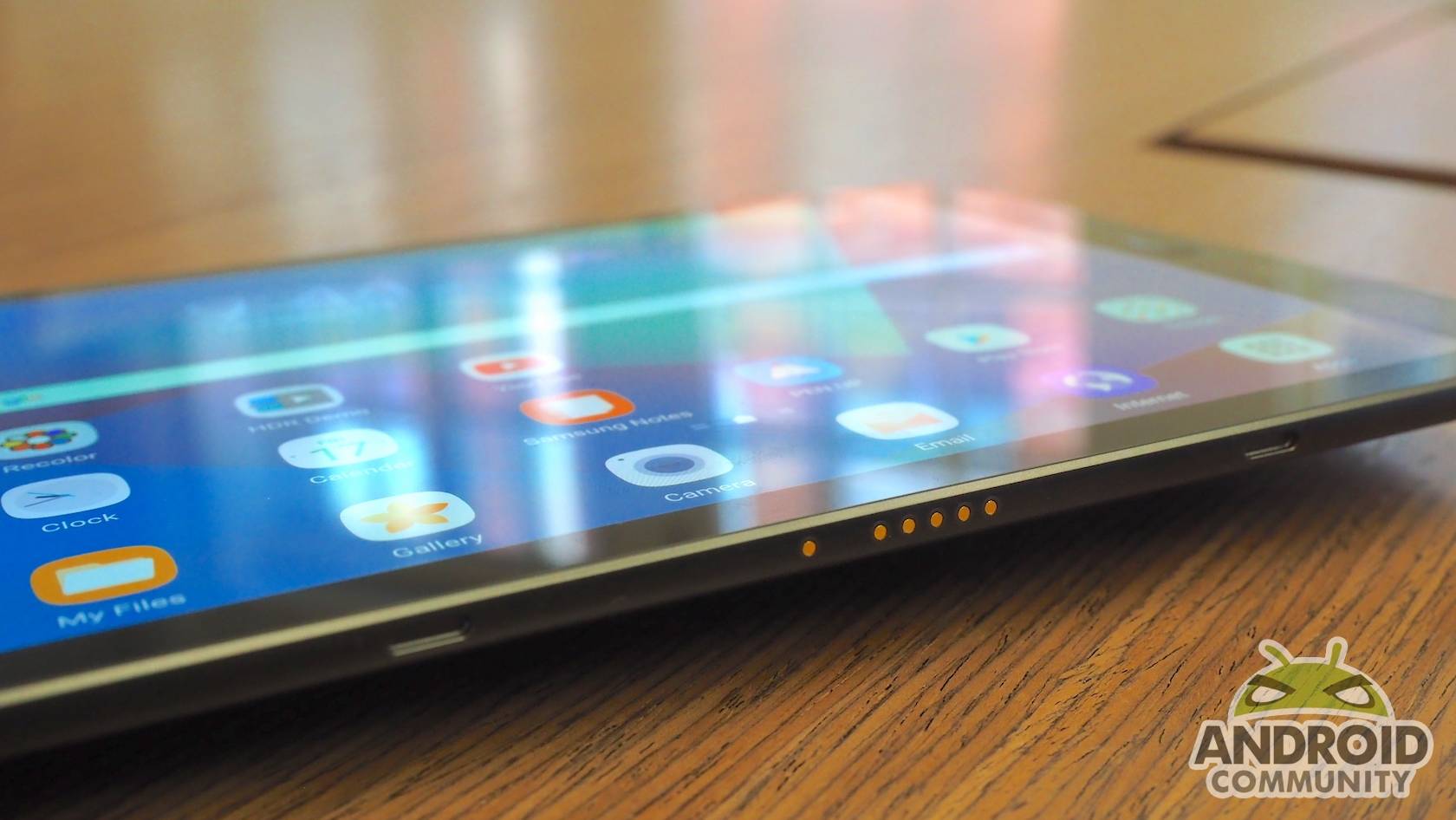
We have audio, we have video, so, naturally, we also have games. The Snapdragon 820 and 4 GB of RAM are definitely enough to handle the often taxing requirements of high-quality mobile games but, if that weren’t enough, the Galaxy Tab S3 also supports the new Vulkan API. Very few vendors, a short list that include NVIDIA and Samsung, have shouted support for Vulkan. Of course, Android 7.0 Nougat itself supports Vulkan, but that also depends on the OEM as well as the game developers to take advantage of that support. And to drive home the idea that the Galaxy Tab S3 is a gaming-oriented tablet, it will come with Samsung Game Launcher pre-installed. You might, however, want to use game controllers for your hands’ sake.
Productivity built-in
Of course, that’s not to say that the Galaxy Tab S3 isn’t made for productivity either. In fact, you could almost say that it was built for productivity without Samsung trying too hard that much. The keyboard cover is definitely a huge plus for road warriors, but they can very well use a Bluetooth keyboard of their choice, too. That said, they will be missing out on the backlit keys that the cover offers. The secret sauce lies in the software that runs on the tablet.
The Galaxy Tab S3 runs Android 7.0 Nougat from the get go, which immediately makes it a productivity beast. Truth be told, Samsung has never really had a need for the split-screen, multi-window features that Nougat brought along, but at least this promises a bit more compatibility with the apps that didn’t really use Samsung’s TouchWiz modifications.

Then there are the apps and features revolving around S Pen. In the Galaxy Tab S3, Samsung has brought to the tablet the Screen Off Memo it first introduced in the Galaxy Note 5. As the name states, it lets users scribble a note even while the display is off, removing a few steps in the process of quickly capturing a piece of information. Annotating PDFs, as well as screenshots, are made all the more relevant with the Galaxy Tab S3’s larger screen. And, yes, you can also make animated GIFs out of video snippets, like on the ill-fated Galaxy Note 7.
And finally, there’s Samsung Flow. Although it has existed for quite a while now, this bridge between Samsung phone, tablet, and PC devices is going to take center stage this year. While it may offer different features depending on what devices you connect together, but the idea is always the same. Samsung Flow allows your phone and tablet or phone and PC to share some pieces of information or notifications. Between a compatible Galaxy smartphone and the Galaxy Tab S3, you will indeed be able to see the phone’s notifications on your tablet screen. In some cases, like select messaging apps, you’ll even be able to reply directly from the tablet. Some actions, however, needs to still be done on the phone, like answering calls. Apparently, users don’t like answering phone calls on the large tablet, even if it means having to spend time getting the phone to answer the call from there. Samsung Flow now also supports automatic tethering between tablet and phone, a new feature that Google recently introduced for its recent Nexus and Pixel devices.
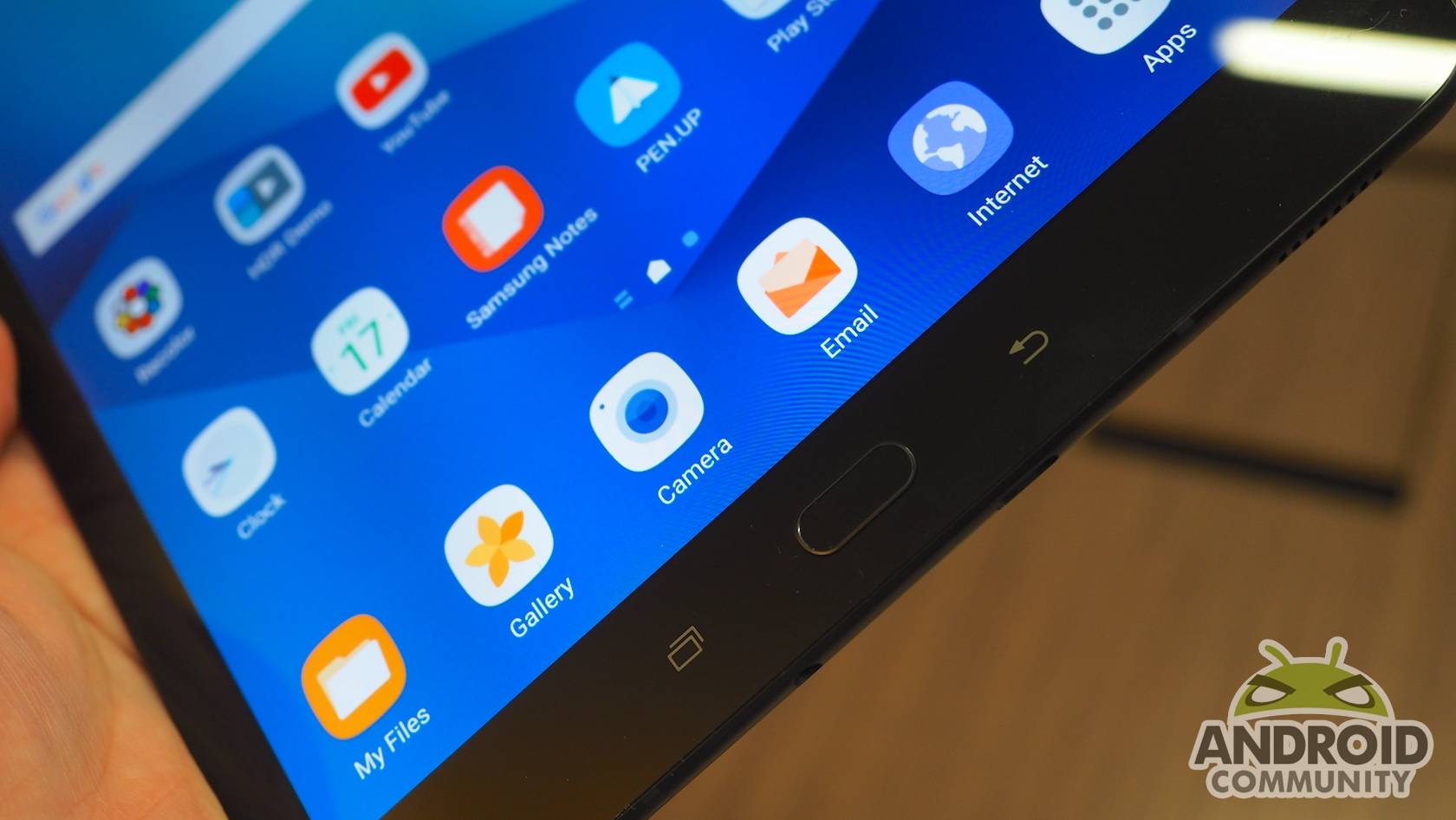
Wrap-up
A classy looking design, more or less the latest mobile hardware, an enhanced and more ergonomic S Pen, four dynamic speakers, a vibrant HDR-capable display, and the (somewhat) latest Android release. The Samsung Galaxy Tab S3 packs everything you could want in a high-end Android tablet and embellishes it with everything you’ll need for both a mobile productivity station and a portable entertainment center. It may not have the pioneering vision of the Yoga Book or the Android purity of the Pixel C, but the Galaxy Tab S3 offers a tried and tested Android tablet that has been refined over the years.
Of course, not everyone will take kindly to anything that even remotely resembles an Apple product, and there are definitely those who have no love for the heavy-handed customizations of TouchWiz. And some might not even see the point in a tablet in this age of phablets. But if Android ever needed a tablet champion, and it definitely does, then the Galaxy Tab S3 could very well be it.
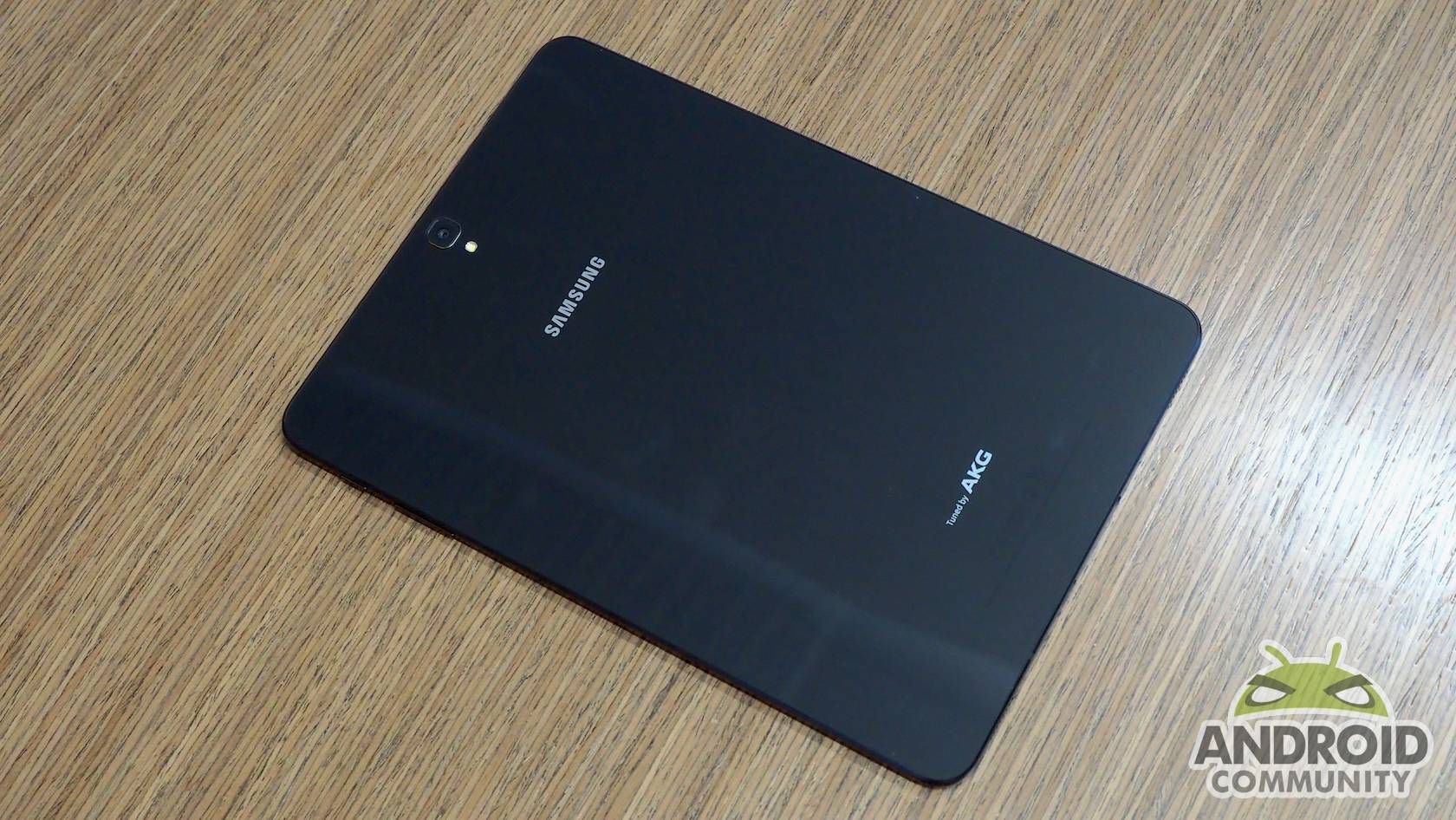
Samsung has yet to reveal the availability and pricing of the Galaxy Tab S3 but when it does arrive, it will have the enhanced S Pen with it inside the box. The Keyboard Cover, however, is something you’ll have to purchase separately.


